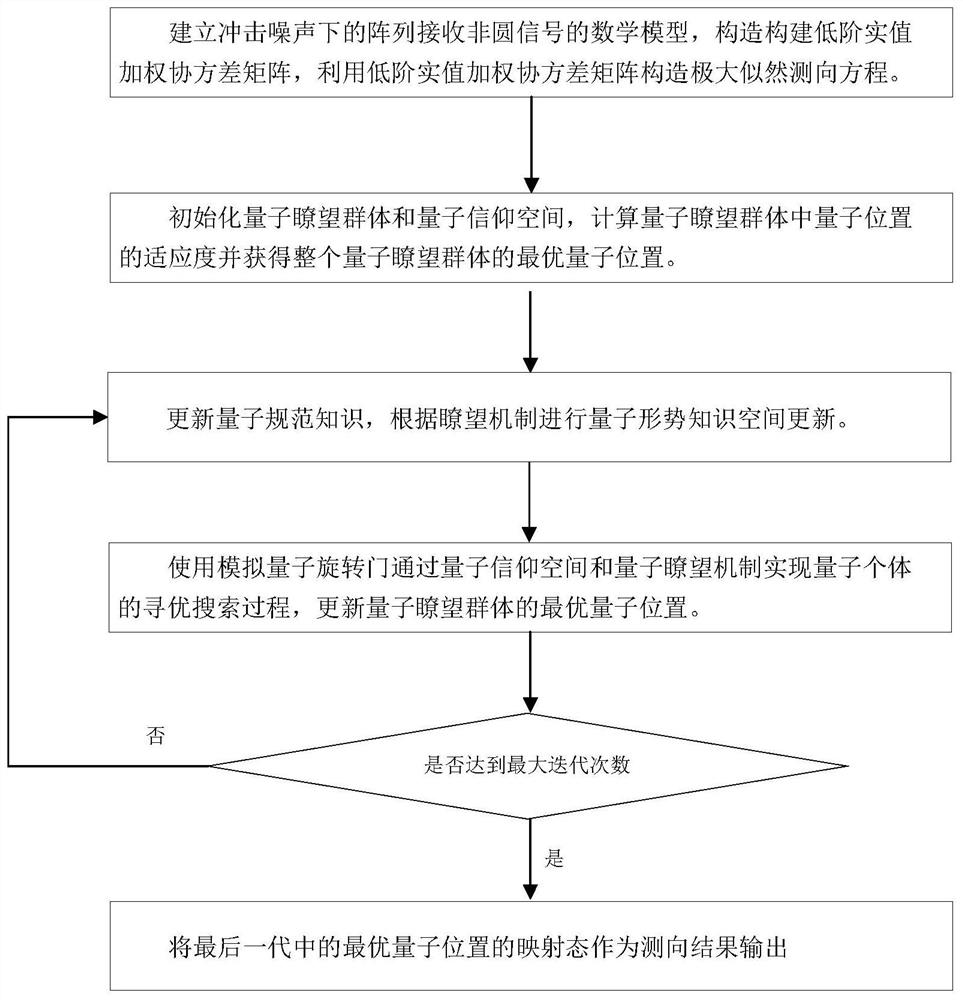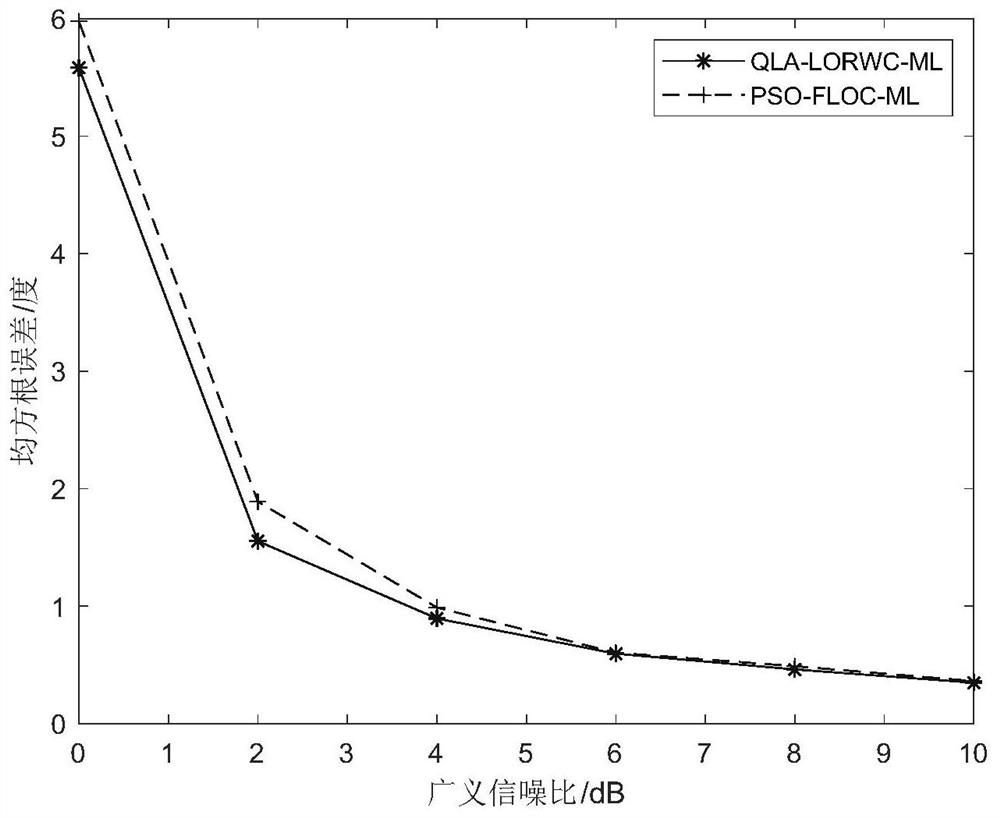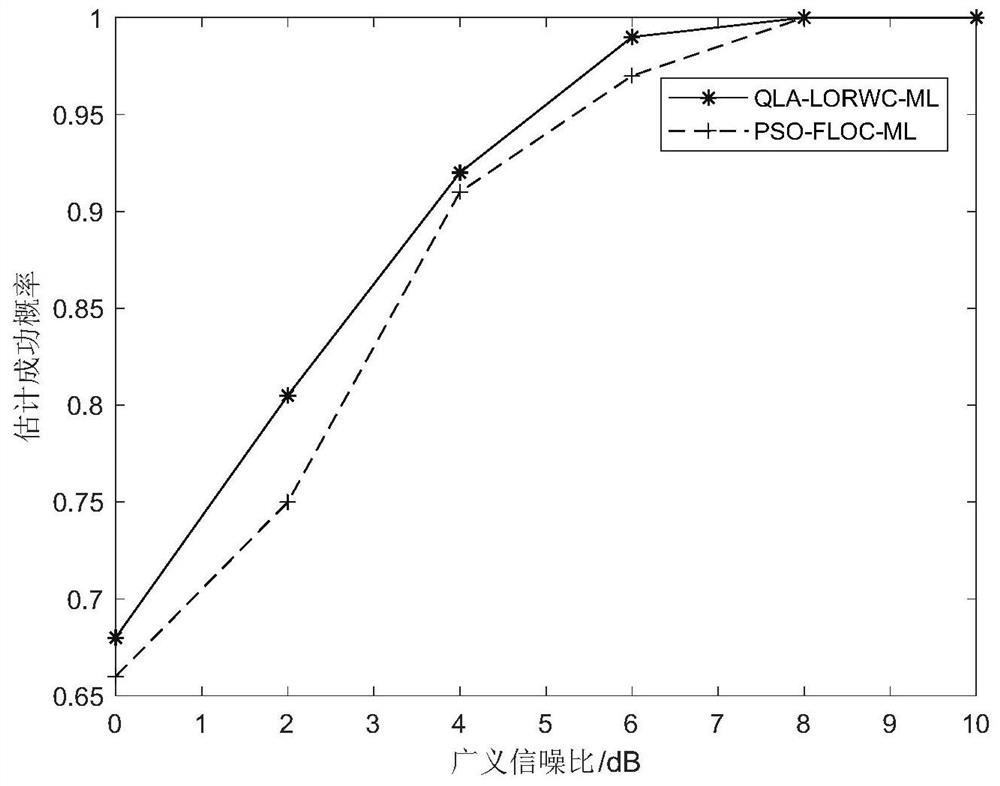Quantum lookout non-circular direction finding method in impact noise environment
A shock noise, quantum technology, applied in direction finders using radio waves, radio wave direction/deviation determination systems, complex mathematical operations, etc., can solve the direction finding of incoherent signal sources, high computational complexity, and direction finding results Quantization error and other problems, to achieve the effect of effectively distinguishing relevant information sources and solving information sources, breaking through application limitations, and free of quantization errors
- Summary
- Abstract
- Description
- Claims
- Application Information
AI Technical Summary
Problems solved by technology
Method used
Image
Examples
Embodiment Construction
[0048] The present invention will be further described in detail below in conjunction with the accompanying drawings and specific embodiments.
[0049] combine Figure 1 to Figure 3 , the steps of the present invention are as follows:
[0050] The first step is to establish a mathematical model of array receiving non-circular signals under impact noise, construct a low-order real-valued weighted covariance matrix, and use the low-order real-valued weighted covariance matrix to construct a maximum likelihood direction-finding equation.
[0051] Suppose there is a uniform linear array composed of M co-directional omnidirectional antennas, and H narrow-band signal sources with a wavelength of λ from a direction angle of θ h The direction of (h=1,2,...,H) is incident to the line array, and the distance between adjacent array elements is d. Under the assumption that the signal is a narrowband signal, for the t-th snapshot, M array elements receive The data is: Among them, x(t)=...
PUM
 Login to View More
Login to View More Abstract
Description
Claims
Application Information
 Login to View More
Login to View More - R&D
- Intellectual Property
- Life Sciences
- Materials
- Tech Scout
- Unparalleled Data Quality
- Higher Quality Content
- 60% Fewer Hallucinations
Browse by: Latest US Patents, China's latest patents, Technical Efficacy Thesaurus, Application Domain, Technology Topic, Popular Technical Reports.
© 2025 PatSnap. All rights reserved.Legal|Privacy policy|Modern Slavery Act Transparency Statement|Sitemap|About US| Contact US: help@patsnap.com



